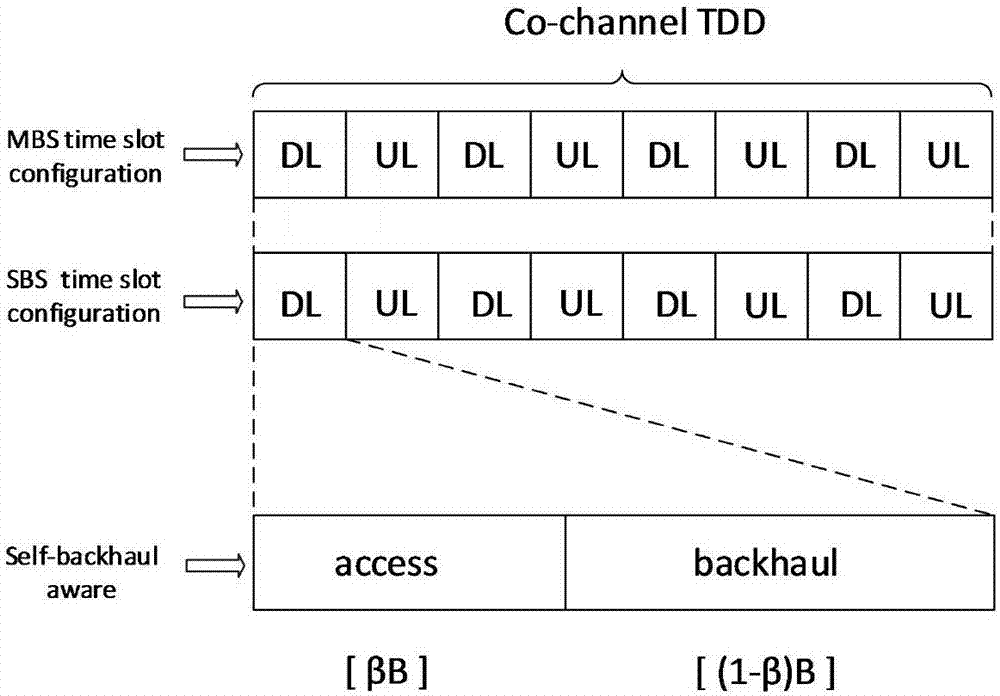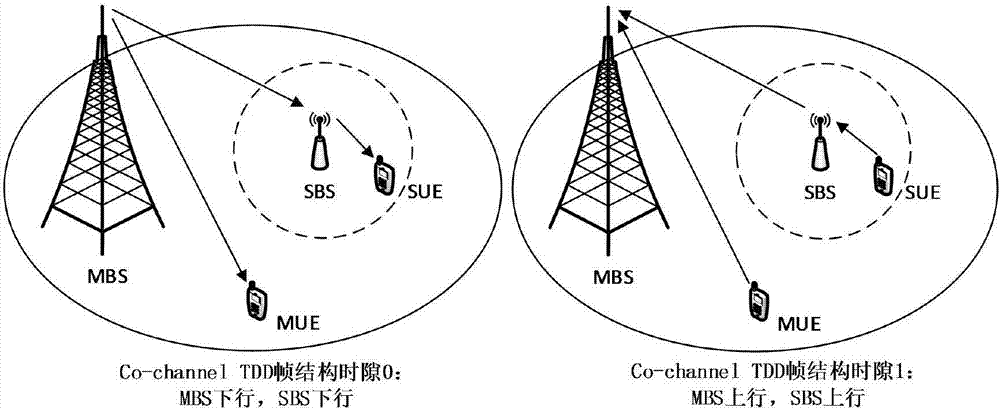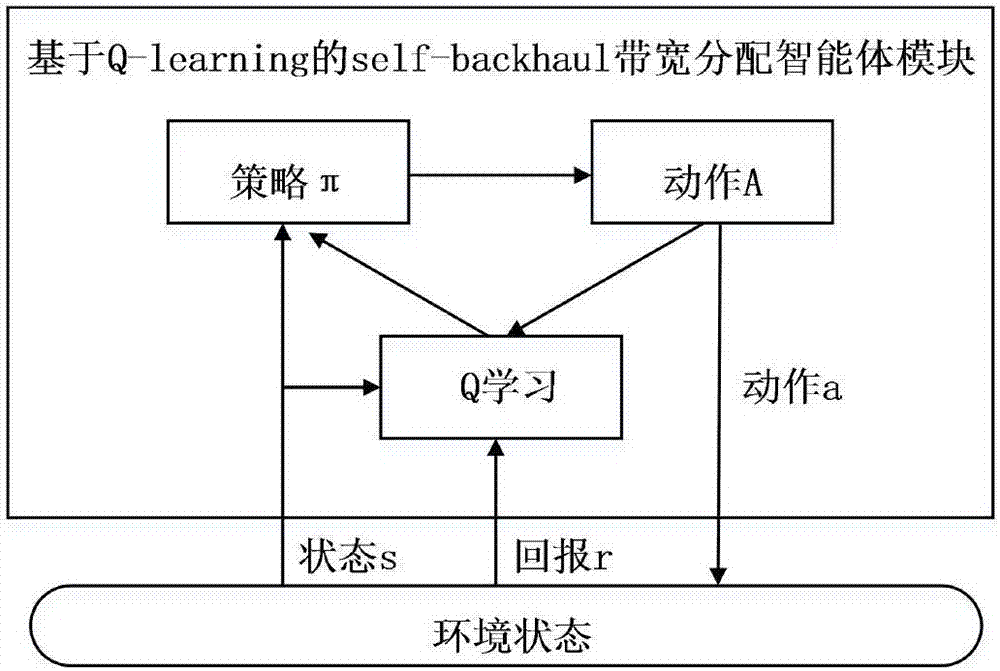User access load balancing method based on self-backhaul perception
A load balancing and self-backhauling technology, applied in network traffic/resource management, electrical components, wireless communication, etc., can solve problems such as low overall performance of base stations, unbalanced access load or backhaul load, and inability to adjust adaptively. The effect of improving user speed experience and network load balancing
- Summary
- Abstract
- Description
- Claims
- Application Information
AI Technical Summary
Problems solved by technology
Method used
Image
Examples
Embodiment Construction
[0034] The preferred embodiments of the present invention will be described in detail below with reference to the accompanying drawings.
[0035] figure 1 Schematic diagram of system Co-channel TDD and access backhaul bandwidth allocation, including:
[0036] The system adopts the orthogonal channel time division duplex mode (Co-channel TDD). In this mode, the macro base station and the small base station adopt the same configuration method in the uplink / downlink time slot configuration, that is, the configuration of a time slot is both UL or DL, and the wireless backhaul link between the macro base station and the small base station and the small base station and the small base station Access link channel resources between users are orthogonal, which can solve the interference problem well. In this paper, all time slots are evenly allocated to the uplink and downlink, and the UL / DL time slots of the small base station and the macro base station are configured in the same st...
PUM
 Login to View More
Login to View More Abstract
Description
Claims
Application Information
 Login to View More
Login to View More - R&D Engineer
- R&D Manager
- IP Professional
- Industry Leading Data Capabilities
- Powerful AI technology
- Patent DNA Extraction
Browse by: Latest US Patents, China's latest patents, Technical Efficacy Thesaurus, Application Domain, Technology Topic, Popular Technical Reports.
© 2024 PatSnap. All rights reserved.Legal|Privacy policy|Modern Slavery Act Transparency Statement|Sitemap|About US| Contact US: help@patsnap.com










